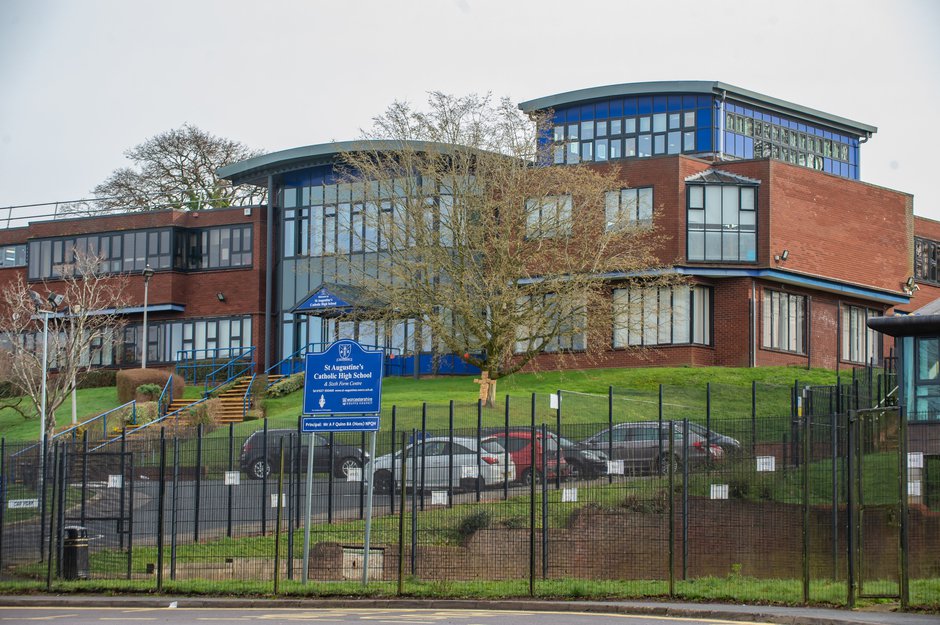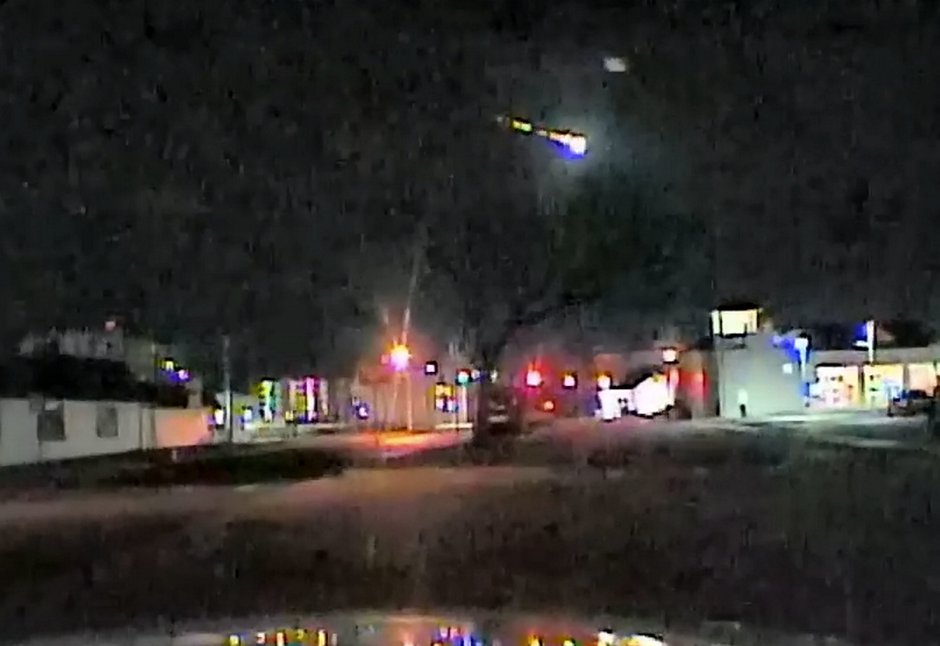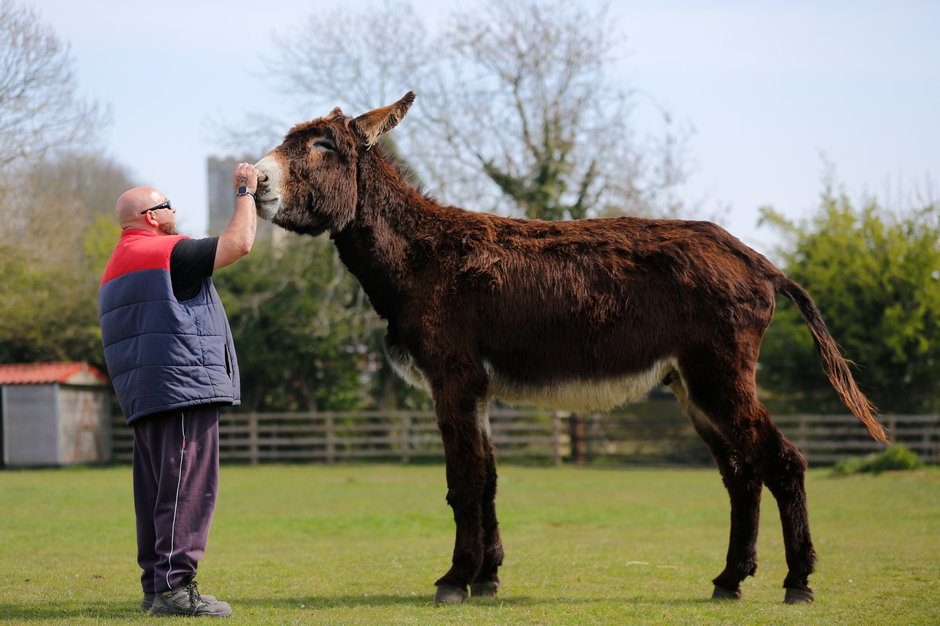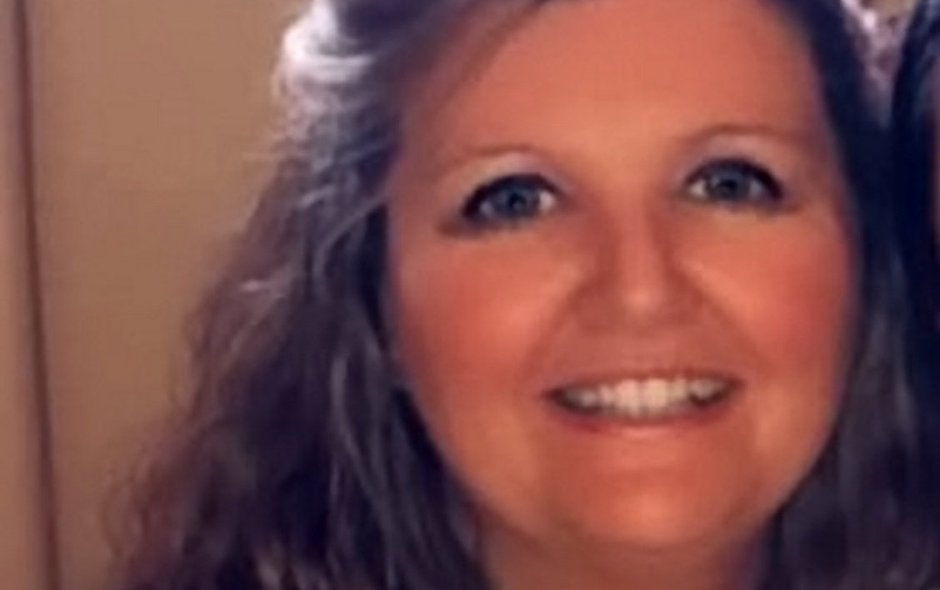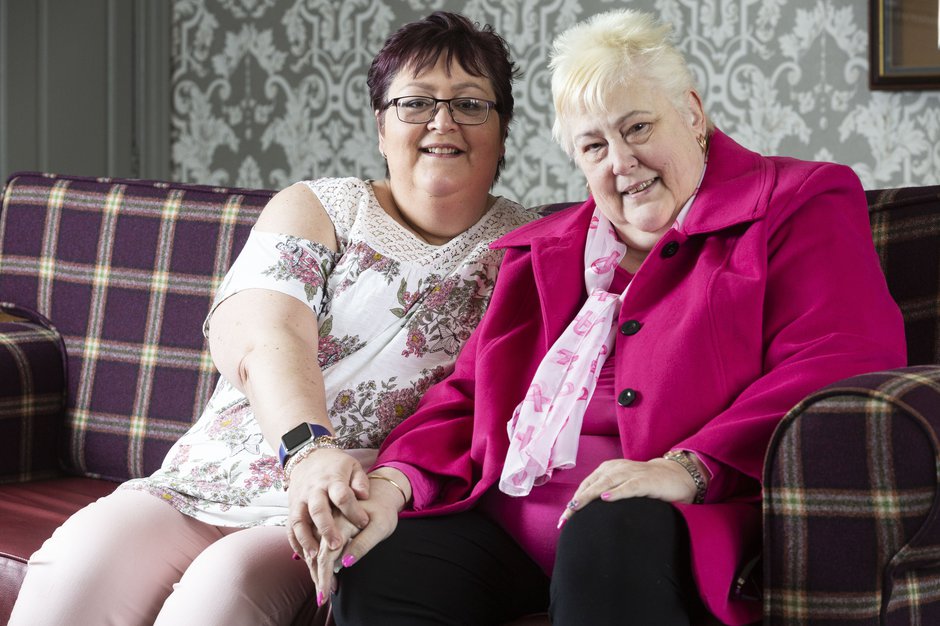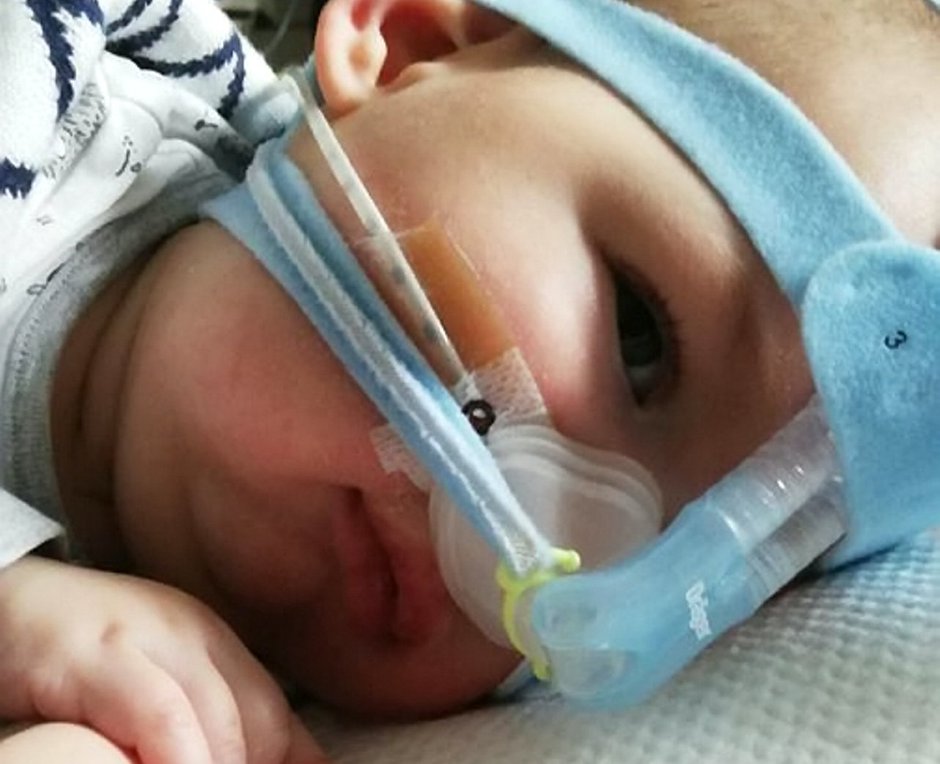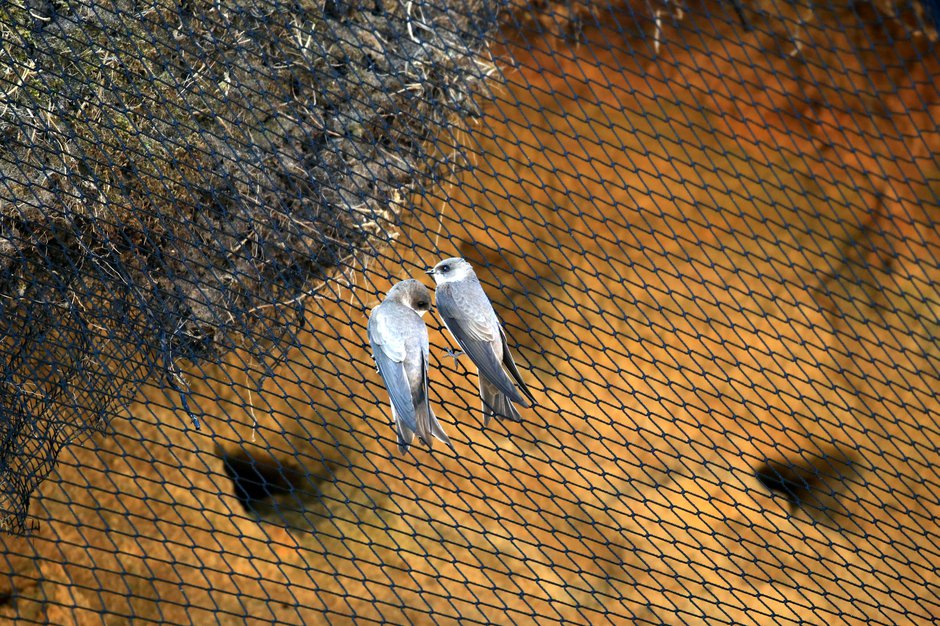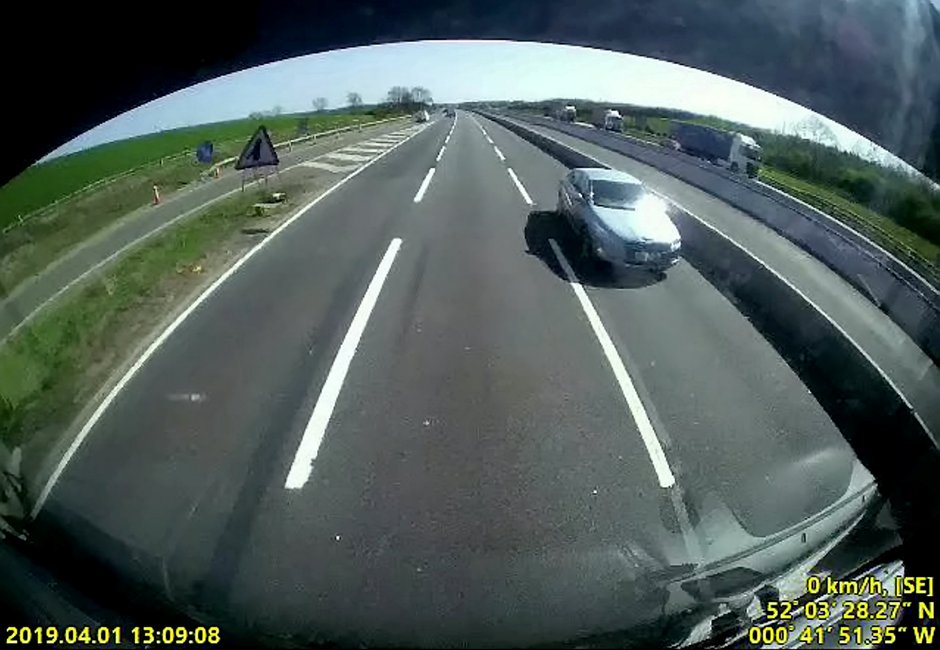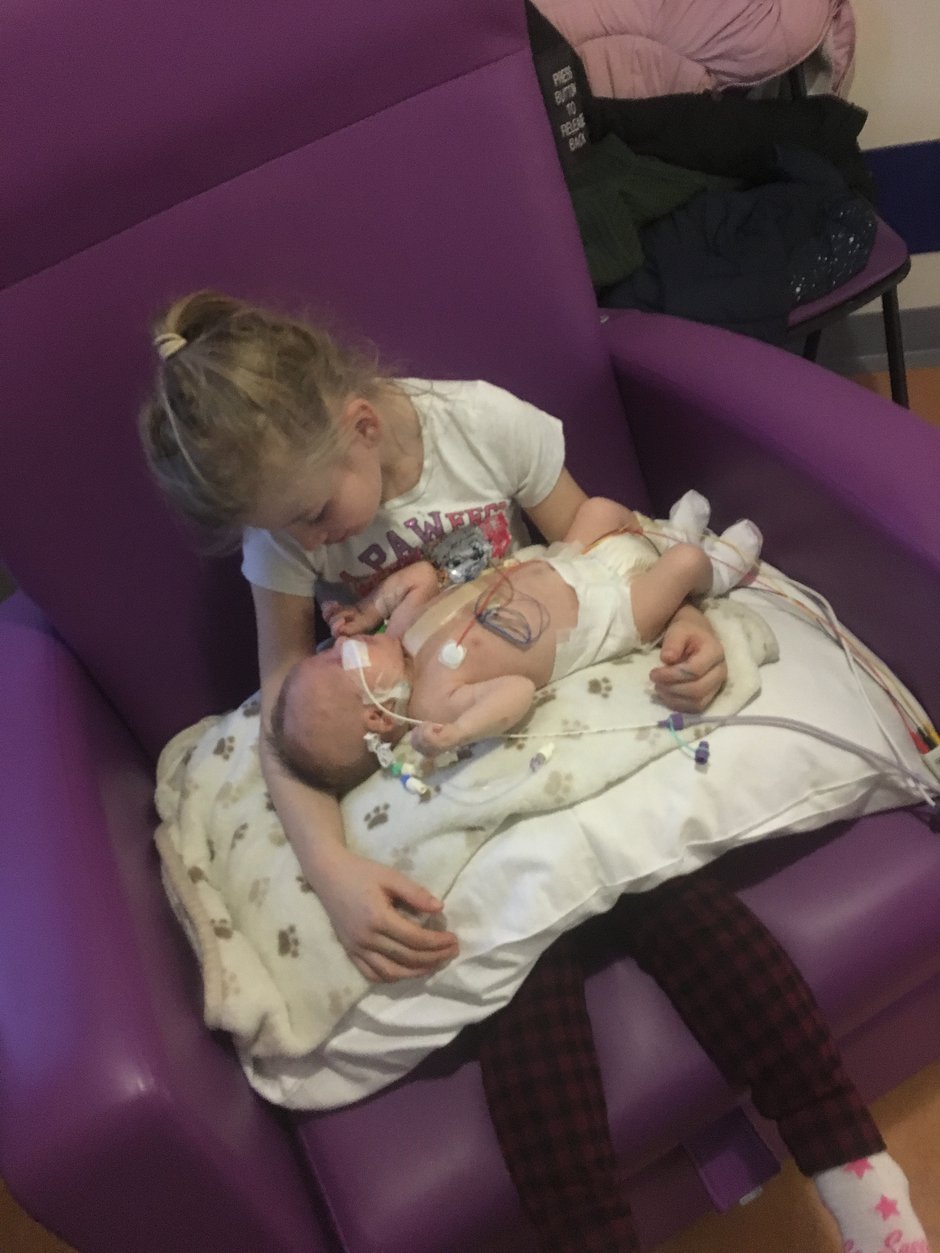Catholic school pupils were hospitalised after "more than 100" suffered burned foreheads while taking part in an Ash Wednesday assembly
 Image by: Steve Chatterley
Image by: Steve Chatterley
Parents at a catholic school say "more than 100" kids suffered burns while having ash crosses smudged onto their foreheads during an Ash Wednesday assembly.
At least two children from St Augustine’s Catholic High School were taken to hospital following the religious event.
Parents said the ritual was performed by a priest and two older children and was stopped half way through when kids complained of "tingling".
One concerned grandparent said more than 100 kids were burned - and parents are considering legal action against the school in Redditch, Worcestershire.
A parent who took her son to hospital for treatment said medics told her it was a chemical burn that would likely leave a scar.
Traditionally the ash for the ceremony comes from leaves burned in last year's Palm Sunday services.
But a grandparent said "toxic" ones had been used this time.
Mum Cassena Brown, 39, said her son Chairo Rowe, 14, was badly burned in the ceremony, had to be taken to hospital and has been off school for two days.
She said: "I am absolutely furious.
"They started with the year nine and it was the priest and two sixth form children - a boy and a girl.
"That's the first thing that confused me when I heard about it. Why are children doing it to other children?
"After a while some of the children said that it had started to burn. Some of the teachers said it did as well.
"Some of them rubbed it off straight away, but some left it on.
"The children who left it on complained it was burning and some were given a wet wipe to wipe it off.
"But when some of the kids wiped it off, it ripped the skin off as well.
"It was red raw. They should have been sent to a medical professional, not given a perfumed wet wipe."
Delivery driver Cassena said all parents were sent a text message saying some children had been left with an "irritation" after the Ash Wednesday assembly.
She said the message said the parents of the most severely affected children would get a call - which Cassena did - and she came to pick up her son early.
"I saw other children walking out with their parents, with red marks - like a heat rash almost - on their foreheads," she said.
"But when I saw my son I was gobsmacked.
"My son was the worst of everyone. Because he is of Afro-Caribbean heritage you can see the burn very clearly, as the skin is burned and it's white underneath."
She said doctors at Alexandra Hospital said it was a chemical burn and recommended keeping the wound clean with cold water.
"It continued to burn throughout the night," she said.
"It was red hot. He won't go to school.
"He's embarrassed. Last week he had girls at school saying he was cute, now he has a burn on his face."
A grandfather of another burned child, who did not want to be named, said "over 100 children were damaged".
He added: "They are anointed with a cross on the forehead.
"The medium used was a mixture of palm oil and ash from burned leaves.
"They must have picked a toxic leaf as the results in most cases were burns on the forehead resulting in hospital admissions for many children.
"The parents are contemplating legal action."
The Christian Ash Wednesday ritual involves receiving a mark of ashes on the forehead as a token of penitence and mortality.
Parents at the school gates today (Fri) said some burned children were sent home.
One dad, who has a daughter at the school, said: “I think it was basically the first year students in school who were affected.
“It’s terrible really."
A mum said: "A load of the kids had to go home after they got burned."
Another mum added: "My daughter said something had happened and some kids got burned on the forehead.
“We are not Catholic so my daughter would not have taken part."

St Augustine’s Catholic High School said the ash was provided by a priest from the Diocese of Birmingham, which sourced it from a company in Aldridge.
Head of school Gerald O'Connor said he didn't know how many children were affected - but it was less than the estimate of "more than 100" given by parents.
He said he didn't know how many children were taken to hospital, but said some teachers were burned too.
A spokesperson for the school said: "During the Ash Wednesday service, it came to our attention that some discomfort was experienced by students that had received the ashes on the forehead.
"As a result all students were requested to wash the ashes off immediately to ensure no further discomfort was felt.
"We are aware that some students had a reaction to the ashes from the parish, for which medical advice has been sought.
"Parents are being kept informed and the school will carry out a full investigation as to why the ashes may have caused this reaction on this occasion."
Mr O'Connor added: "There were a number [of students] that we advised to seek medical attention. We've asked parents to keep us informed as to whether they did or not.
"We dealt with the issue immediately. Obviously health and safety is our primary concern.
"Some teachers were affected. We advised them to seek medical attention as well.
"We source our ashes from an external provider. We know there are processes to follow, and that is under investigation. We have asked for that investigation to happen. We want to get to the bottom of it."
Watch jaw-dropping moment huge meteor lights up night sky as it crashes towards Earth
Video by: Jessica Waters  Image by: Simon Galloway
Image by: Simon Galloway
This is the jaw-dropping moment a huge METEOR lit up the night sky as it crashes towards Earth.
The incredible footage was filmed by a police car’s dash cam during a routine patrol in Maryland, USA.
Cops in Ocean City were driving along 130th street at around 11am on Tuesday (April 16) when the meteor burst through the earth’s atmosphere.
The clips shows the firey meteor career down from space to put on a breathtaking display.
It was filmed in Ocean City, on 130th Street, by Ocean City police patrol officer, Nathan Kutz.
PFC Kutz had been asked by a resident of the community to carry out extra patrols in that area after raising safety concerns to the force.
Ocean City Police Department have dash cams installed on their patrol vehicles in their constant fight against crime.
But on this rare occasion, PFC Kutz was able to use his to film this “incredible display”.
A spokesperson for Ocean City Police Department said: “Just before midnight, the meteor flew through the sky and was captured on PFC Kutz dash cam.
“We are used to our dash cams catching the bad guys but the fact that it caught this beautiful display of science is incredible.”
Meteors - also known as shooting stars - typically hit speeds of up to 45,000mph when they enter the earth’s atmosphere.
As they head towards the surface of the earth they create a streak of light caused by aerodynamic heating.
Meteors become visible between about 75 to 120 km above Earth and vary in size and composition.
 Image by: Simon Galloway
Image by: Simon Galloway
Astonishing moment free runners ride on top of a TRAIN in London for a stunt

This is the astonishing moment two adrenaline junkies rode on the top of a moving London TRAIN.
The daredevils can be seen running towards a Docklands Light Railway station before racing up to the platform and jumping on the outside of the final carriage.
A video shows the masked pair then hoisting themselves to the top of the driverless train and "surfing" it out of West Silvertown Station in London.
Go-Pro footage shows the men leaping between the carriages, and bracing themselves against the wind on top of the train which can reach speeds of 50mph.
As it pulls into the next station - understood to be Canning Town - the two men race to the end of the train before leaping onto the platform and racing out the exit.
One of the men, who would not be named, said the stunt took place last week.


The 21-year-old said: “It was just fun.
“The ride between stations was probably about two minutes but it felt like an eternity.
“When we arrived at the next stop people were shouting for us to ‘get down’ which is understandable as for a normal person this is unimaginable.
“Most of them say that we have a death wish.
“I don’t regret doing it.
“It’s all about your attitude and how you time it.
"We knew we could never do it on the underground so this was the next best thing.
“We couldn’t during rush hour and if we left it too late it would have been kids coming back from school."
A spokesman for the British Transport Police has been contacted for comment.
British sanctuary is home to this massive DONKEY which is set to become the biggest - in the WORLD
 Image by: Tom Maddick SWNS
Image by: Tom Maddick SWNS
A British sanctuary is home to this massive DONKEY which is set become the biggest - in the WORLD.
The enormous young animal called Derrick is a staggering 16.3 Hands (5ft 7ins) tall -
and is still growing.
Whopping Derrick is an American Mammoth Jackstock - the largest breed in the world.
The current record is held by Romulus in the Texas, USA, who measures 17 Hands - (5ft 8ins).
Derrick is now just an inch short but his owners say he will easily become a world record holder for biggest donkey.
The donkey lives at Radcliffe Donkey Sanctuary, Lincolnshire.
 Image by: Tom Maddick SWNS
Image by: Tom Maddick SWNS Image by: Tom Maddick SWNS
Image by: Tom Maddick SWNS
Sanctuary owner Tracy Garton said: "He was always big, he was big when he was born.
"He hasn't finished growing yet, they stop growing when they reach seven years old.
"So he still has a lot of time."
The 52-year-old said that despite his size, Derrick is a gentle giant: "Derrick is very very friendly.
"He's just like a big dog, follows you around all the time and wants to be by your side."
When Derrick stops growing, the sanctuary will call Guinness World Records.
Romulus has held the title since 2013, but is set to lose the crown once Derrick finishes growing.
Radcliffe Donkey Sanctuary opened in 1992, it has 59 animals including donkeys, mules, horses, zeedonks and a zonky.
 Image by: Tom Maddick SWNS
Image by: Tom Maddick SWNS
Moment quick-thinking police call handler saves mute man's life by interpreting his frantic tapping down the phone
Video by: Ellis Wylam
This is the incredible moment a mute man who called 999 was able to communicate with the emergency operator - using a series of TAPPING noises.
The 63-year-old became poorly at home and his call for help went through to police when he didn't speak.
Thankfully call handler Kathryn Longstaff realised something was wrong and quickly realised the man was communicating with her via tapping.
The pair communicated by her asking him questions - and he tapped for yes, adding a number of taps in quick succession to indicate a more urgent answer.
The man - who usually communicates using a whiteboard - was rushed to hospital and later used the board to thank Kathryn for saving her life.
In an audio recording of the call, the Cleveland Police call handler can he heard asking him if he needs an ambulance, if he has problem breathing and if his door is open.
The only way the man from Cleveland, was able to answer was by hitting something to make a noise, during the call on February 16.
 Image by: Matthew Newby SWNS
Image by: Matthew Newby SWNS
Kathryn said: “As soon as I picked up the call, I knew something wasn’t right and I had to think quickly of a way to communicate with him as I didn’t know at that point what sort of danger he was in.
“Thankfully he had contacted police before and his number and address were already on our system.
"This allowed me to ask him to confirm his personal details by tapping.
"I then asked if he was in danger and if he needed an ambulance.
“I even asked him if he could manage to open the door to allow medical services to access his house, which he was able to do.
“As soon as I knew that he was in danger, my colleague dispatched officers to his address who also alerted the Medicar to attend as quickly as possible.
"Once it arrived, the man was rushed to James Cook University Hospital.
“The man could only use a whiteboard to communicate with staff and he wrote on it to thank all the staff for saving his life, which was extremely moving."
Head of force control room Superintendent Emily Harrison said Kathryn was "an absolute credit to the force".
She added: "Without her quick-thinking the man might not be alive today."
Sisters with deadly cancer diagnosed just weeks of each other -- but only one of them will survive
Two sisters have told of their heartbreak after both were diagnosed with the same rare aggressive cancer just weeks apart - with only one set to beat the killer disease.
Julia Gailes, 48, found a lump in her left breast and while she was waiting for test results, sister Wendy Moffett, 57, discovered an identical lump in her right boob.
Not wanting to worry her little sister, Wendy secretly had tests, and was diagnosed with the same cancer as Julia, five weeks after her sibling.
The pair both had single mastectomies two months apart, and Julia had chemotherapy and radiotherapy.
They supported each other throughout 18 months of treatment, calling regularly and sending text messages to boost each other's spirits.
But while Julia was told she was in remission, Wendy was told she couldn't have chemotherapy due to a weak heart.
Just 10 months after her sister was given the all clear, Wendy was told her cancer was terminal, and she had one year to live.
Despite their starkly different prognosis', the pair are closer than ever, and threw a joint party to celebrate life.
Married mum-of-three Julia, from Consett, County Durham, said: "It's felt like the luck of the draw -- obviously I'd rather we'd not had it, but if I was going to go through this with anyone, it's Wendy.
"I can feel well for myself - but knowing that I’m going to be okay when Wendy will not be has been too much to bear."
Grandmother-of-four Wendy, a former end of life carer, from Bishop Auckland, said: "I didn't think when I was diagnosed that it would be what got me in the end. But at least I've had Julia.
"I know it's been hard on Julia, because she's surviving when I'm not. But it's okay. I’m not fed up, I’m not angry, I’m not overly upset -- it’s just happened."
Shop worker Julia found a lump in her left breast in May, 2017, when she happened to brush her hand across her breast and felt it, and was diagnosed later that month.
Unknown to her, Wendy was secretly waiting for her biopsy results after finding similar lumps on her right breast, following a regular checkup.
Though Wendy knew about Julia’s diagnosis, she didn’t tell her sister she might also have cancer because she didn’t want to stress her out during her ordeal.
“I didn’t want to alarm her - but we’re such close sisters that afterwards I felt silly for not having told her straight away,” Wendy said.
Five weeks after Julia’s diagnosis, Wendy was told that she had also been diagnosed with triple negative -- the exact same strain of the disease, in July 2017.
Julia and Wendy, a mum-of-three, are two of 8,000 women in the UK this year alone who will contract triple negative breast cancer, according to Breast Cancer Care.
This vein of cancer is not fuelled by oestrogen and progesterone, which means it doesn't respond to hormonal therapy medicines.
Triple negative breast cancer cells produce too much of the HER2 protein, meaning that cells divide too quickly and the cancer is more likely to spread and to recur.
It can only be treated with surgery, chemotherapy, and radiotherapy.
Though Wendy and Julia had genetic tests to see if the disease is hereditary, there's no risk for their children.
Wendy was treated at Darlington Hospital at the same time that Julia was being treated in Hexham -- and both sisters lost one breast each.
Julia's breast was removed in December 2017, after she had a failed lumpectomy.
Wendy had her mastectomy in August 2017 because she couldn't have intensive treatment.
Julia had an aggressive first round of chemotherapy between May and October in 2017, 15 days radiotherapy in February, and another six months' chemotherapy from March.
Wendy had already fought off breast cancer five years earlier, so could only have five days of radiotherapy, due to intense treatment first time round.
She also has dilated cardiomyopathy, which reduces the heart’s ability to pump blood -- and which stopped her from having chemotherapy.
“Because I’d had that cancer, though, and I’d had the radiotherapy back then, the doctor said I could only really have five days’ extra treatment," she said.
“My weak heart means I’ve never had chemo.”
Julia went into remission and was declared free of triple negative in March 2018.
But Wendy’s health took an unfortunate turn for the worst.
Just days after her mastectomy in August 2017, she had a massive heart attack.
She was rushed to a coronary clinic before being immediately transferred to The James Cook University Hospital in Middlesbrough for one month.
Wendy was then fitted with a pacemaker and defibrillator -- which she said has set her back enormously and slowed her down.
“Heart failures put everything on hold,” she said. “I can’t move or stand as much as I used to now. I’ll never get back to how I was before.”
She Wendy found more cancerous growths on her surgical scars and down her back in September 2018.
She was diagnosed with secondary cancer - which was "treatable but incurable" - in October, after it spread to her lungs.
Doctors said in January this year she was terminal, and she was given 12 months to live.
But Wendy has remained positive - and in sisterly style is more worried about her sibling than herself.
“Julia was able to have a round of chemo, followed by a round of radiotherapy, and another round of chemo, and it looks, on that basis, like the treatment obviously worked," said Wendy.
“But because of what’s happened to me, it’s something that she will always have hanging over her.
"She'll be thinking -- ‘Will it come back?’ I know she’s wondering.
“We’ve chatted loads about it and at the back of her mind, she knows that she’s beaten the cancer - at least, for now.
“She’s thinking a lot about if it grows back, like it did for me.
"I know I would be the same if I had beaten it and Julia was diagnosed with secondary cancer.
“It’s something that you can never put out of your mind.”
Julia, who cares for her autistic son, Lewis, nine, and her father James, 79, who has vascular dementia, said she checks every day that her tumours haven't returned.
"I’m not confident it won’t come back," said Julia, who has husband Andrew, 50.
"Although they told me that I’m cancer free, I still check along my scars every day for little lumps.
“This particular cancer is so aggressive, and because it returned along Wendy’s scar lines I’m checking all the time.
“Every time I cough, I think there might be a speck in my lungs. I’m petrified.
“I can’t go through chemo again. It was horrific.
“Thinking about the cancer returning moves me to tears.”
She’s found it hard to accept that Wendy will not survive the same cancer that she has now been declared free of.
“I can feel well for myself - but knowing that I’m going to be okay when Wendy will not be has been too much to bear," she said.
Julia and Wendy threw a gala in March and raised £5,000 for Breast Cancer Care.
Through her Facebook blog, Julia’s Jugs’ Journey, she raised £2,500.
Despite the immense trials she has faced, Wendy is taking each day as it comes.
"I know it's been hard on Julia, because she's surviving when I'm not. But it's okay. I’m not fed up, I’m not angry, I’m not overly upset -- it’s just happened," she said.
“There’s no rage, I don’t feel unlucky -- I’ve accepted it.
“My focus is on every month -- I like to think that I’m a glass half full person.
“I won’t go down without a fight.”
 Image by: Julia GailesVideo by: Lee Mclean SWNS
Image by: Julia GailesVideo by: Lee Mclean SWNS
Family of a baby boy given three months to live are desperately waiting to see if the NHS will pay for the drug that could save his life
 Image by: Matthew Newby SWNS
Image by: Matthew Newby SWNS
The family of a baby boy given three months to live are desperately waiting to see if the NHS will pay for the drug that could save his life.
Six-month-old Haris Khan was born with a rare and debilitating genetic disorder, Spinal Muscular Atrophy (SMA), also known as floppy baby syndrome.
When his family were given the devastating diagnosis this month they were also delivered the mortifying blow that the drug that could give him a better, longer life had been pulled in November last year.
Now, Haris' dad, salesman Shakeel, is joining a protest next month - along with other SMA families - to fight for the £450,000-a-year drug, Spinraza.
 Image by: Matthew Newby SWNS
Image by: Matthew Newby SWNS
They will be gathering outside the NICE offices in Manchester next Tuesday ahead of a crucial meeting to come to an agreement over funding.
In the meantime, adorable Haris, from Wythenshawe, Greater Manchester, is in intensive care at the Royal Manchester Children's Hospital attached to an apparatus that helps him breathe.
His family of 31-year-old dad, mum, shop assistant Renata, 26, and nine-year-old brother Marijus, are staying at a local hotel so they can be at Haris' bedside 24/7.
They fear each moment could be his last.
On February 14, specialist doctors told the family Haris has the severest form of the illness, type 1, which affects the nerve cells needed to control the muscles we use for moving, swallowing and breathing.
The irony is, that if Haris had been diagnosed sooner - he was born in August last year - he would have already been given the drug, as it available on a pre-approval basis.
 Image by: Matthew Newby SWNS
Image by: Matthew Newby SWNS
The first British girl to receive it, Annabelle Rose Thomas, has come off breathing support, can swallow food and has even ridden a horse.
But last summer, the National Institute for Health and Care Excellence (NICE) said it was not recommending Spinraza be available on the NHS in England because the cost was deemed 'too high for it to be considered a cost-effective use of NHS resources'.
It remains available in Scotland and several other European countries.
Biogen, the company which makes the drug, charges almost £600,000 for it in the US market.
It is offering Spinraza at a lower price of £450,000 for the first year in the UK, and offered an undisclosed discount to the NHS, but it was still not enough.
Shakeel said: "Only a hundred babies a year maximum need that treatment. We, as a country, are losing a hundred babies because we don't think it's justified to save them.
"These organisations are using my son as a bartering tool. The best I can do is to save my son, or keep him with us for as long as possible.
"I'm just beginning my journey in parenthood - I want him here as long as he can be.
"There is a one in four chance my next child will have this - we can't have any more children."
 Image by: Matthew Newby SWNS
Image by: Matthew Newby SWNS
Amazingley, the Wythenshawe community had shown tremendous support for the Khan family.
Every neighbour on their street has a poster in the window about SMA.
Marijus' school and the Rainbow Trust Children's Charity are helping the family any way they can.
Whatever the outcome for Haris and the decision on March 6, Shakeel and Renata don't want other families to go through the same ordeal.
"We might only have my Haris for a few months, so I've got to create a legacy for him," said Shakeel.
"The NHS don't screen for SMA at birth.
"Had they screened him in August when he was born, the treatment was available until November on the Early Access Programme.
"Eighty infants are on that - Haris would have been 81.
"That's one thing we're calling for."
Haris is the youngest child with SMA to feature on a leaflet being handed out to all MPs this week by the charity Muscular Dystrophy UK.
 Image by: Matthew Newby SWNS
Image by: Matthew Newby SWNS
Shakeel wants as many people as possible to be aware of the fight and support the cause.
"Every SMA parent is waking up thinking 'is this our child's last day?' he said.
A spokesperson for NHS England said: "We understand how difficult and frustrating it is for families waiting for decisions to be taken on the funding of new treatments, which is why the company must price this drug responsibly and at a level which is both cost effective and affordable to the NHS.
"It is disappointing that Biogen chose to close the Early Access Programme for new patients with Spinal Muscular Atrophy Type 1 before the NICE assessment process had been completed."
A JustGiving page has been set up to raise money to support the Khan family's campaign to improve awareness of SMA. It is also where Shakeel is posting updates on Haris and his battle. You can visit and donate here: https://www.justgiving.com/crowdfunding/littleharis?utm_id=69
Video by: Matthew Newby SWNS
RSPB hit out at local council for netting up a cliff stopping birds from nesting
Video by: Margaret Wilcox  Image by: Margaret Wilcox
Image by: Margaret Wilcox
Bird lovers hit out at a council putting up netting on a cliff side preventing sand martins from nesting.
The RSPB say that the netting is risking the lives of the birds as they may get stuck in it.
The RSPB shared a video on Twitter and said the effect of the material, which resembles a football net, was "heart breaking" and said that the council "have not taken out (and their contractor's) original advice."
The netting was put up on the Bacton cliff side, Norfolk, to deter wildlife from nesting during a project to stop erosion.
North Norfolk District Council (NNDC) will move 1.8 million cubic metres of sand from the cliff side and on to the beach.
The council says this will protect Bacton village from flooding for "up to 20 years".
An online petition to stop the nets, has been created to: "Grant legal protection to Swallow, Swift and Martin nest sites not just nests."
The petition has gained over 25,000 signatures to protect locations similar to the Bacton coast.
A spokesperson for the RSPB said: "We are disappointed that North Norfolk District Council have placed netting on the cliffs at Bacton to prevent sand martins from nesting.
We can confirm the Council's actions do not follow RSPB advice, or indeed their own construction plans."
Based on the images we have seen published, our advice has not been followed and we will be reaching out to NNDC to offer further advice and support."
The decision has sparked outrage on social media, with some users sharing videos saying: "These innocent Sand Martins have travelled thousands of miles to revisit our amazing country & to find their nest sites netted up like this is crazy.
"Whoever's ordered this, needs their family home taken from them!"
A North Norfolk District Council spokesman said: “The Bacton/Walcott Coastal Management Scheme (the Bacton Sandscaping Scheme) is a highly complex project.
“It has been designed to protect hundreds of homes in Bacton and Walcott, and the critical infrastructure of Bacton Gas Terminal, for many years to come, and has been five years in the planning.
“It has been subject to full environmental impact assessment, planning permission and marine licence applications.
“We understand that the RSPB have concerns around the temporary netting element of the project and we are intending to meet with them and contractors on site to fully assess what those concerns are."
 Image by: James Linsell Clark SWNS
Image by: James Linsell Clark SWNS Image by: Margaret Wilcox
Image by: Margaret Wilcox
North Norfolk District Council have given into pressure and have agreed to remove controversial netting on a cliff side that is preventing birds from accessing their nests.
Following a meeting with the Nature's Voice the Council have announced: "Following positive discussions with the RSPB and Natural England today, we have instructed contractors to remove the upper levels of netting on Bacton cliffs.
"Minimum levels will be retained to assist in progressing with this critical project to protect people’s homes and national infrastructure.
"Following this, ongoing discussions will take place between NNDC and the RSPB about the material to be used on the lower section of cliff to allow this to happen.
"Please also be aware that these cliffs are not safe to climb on. Please don’t attempt to do this. A team of abseiling professionals will carry out the work in the next 24 hours."
The RSPB are unhappy with the result as it doesn't go far enough to protect sand martins and other birds.
A spokesperson said: "The issue and images of the Bacton cliff netting have been very upsetting for all.
"We are pleased to have had a conversation with North Norfolk District Council this afternoon about the situation. During the conversation, the Council committed to removing the netting covering the upper section of the cliffs tomorrow once their abseiling teams are available.
“We will be taking up an invitation from the Council to visit the site as soon as possible this week to discuss our outstanding concerns. This will cover our concerns regarding the 1.3km length of the netted cliff face that will remain.
"We will ask the Council to reduce this to 50m maximum and keep to a height of 7m. We will also be raising the issue of the material currently in use.
"We will be re-outlining our original recommendation of geotextile meshing to ensure that the burrows in the sandscaping zone are not smothered; in addition, by using geotextile it will also ensure no birds can be trapped.
“We will continue to keep everyone updated as the situation develops. Thank you for your concern regarding the sand martins.”
Two separate online petitions in connection have been signed by hundreds of thousands of people.
The petition 'Make 'netting' hedgerows to prevent birds from nesting a criminal offence' has over 260,000 signatures, and was supported by Labour MP and Shadow Secretary of State for Education Angela Rayner.
The other, 'Grant legal protection to Swallow, Swift and Martin nest sites not just nests' has close to 40,000 signatures.
A protest has been organised at Bacton beach, Norfolk at 5pm this evening (8/9), by a private Facebook group in which members have threatened to remove the netting themselves.
The hashtag 'NetsDownForNature' has been trending on Twitter throughout the day.
 Image by: James Linsell Clark SWNS
Image by: James Linsell Clark SWNS Image by: James Linsell Clark SWNS
Image by: James Linsell Clark SWNS
Shocking footage shows brainless driver going the wrong way on the M1
Video by: Mark Thomas  Image by: Mark Thomas
Image by: Mark Thomas
Shocking footage shows a brainless driver risking lives by going the wrong way on the M1 – before trying to correct his error by reversing up the fast lane.
The elderly motorist turned right and crossed three lanes of the busy motorway before driving towards oncoming traffic.
When the male driver realised his mistake he tried to reverse back along the fast lane before pulling forward again.
The driver eventually manages to reverse back up the road before driving the wrong way down the sliproad.
The video shows the hapless motorist join the southbound carriageway of the M1 at Milton Keynes, Bucks., at 1pm on Monday (1/4).
Lorry driver Mark Thomas, 54, captured the terrifying moment on his dashcam as he drove from Tilbury Docks in Essex.
The divorced dad-of-one, of Shrewsbury, Shrops., said: “I was really shaken up by it, he could have killed someone, I couldn’t believe it.
“I was driving in the middle lane and noticed in the distance was not quite right.
“I was doing around 60mph when I saw the car coming up on the fast lane, and slowed down to 40mph in an instant.
“I just slowed right down and put on the hazard warning lights.
“I could see a young bloke in the white van next to me brake hard and he was really straining on the seatbelt.
“The man in the silver car looked like he was 65 to 70 and was very confused.
“He might not have understood the signs. I wondered if he might be a foreigner.
“When he was reversing on the fast lane I was shouting out the window at him to turn around, in fact I went hoarse from shouting.
"He tried reversing back down the carriageway a couple of times until he weaved his way back down the fast lane and goes the wrong way down the slip road.
"It was lucky it was a clear day because if it had been foggy that would have been it. The road was busy with cars and lorries like mine and he could have caused carnange.
“I have been a trucker for 32 years and this is the first time I’ve seen anything like this.
“I sent the dashcam to the police and they say someone has already reported it, I don’t know what’s happened to the driver."
 Image by: Mark Thomas
Image by: Mark Thomas Image by: Steve Chatterley
Image by: Steve Chatterley
Brave six-year-old saves baby brother’s life by choosing to become his bone marrow donor
 Image by: Kelsey Stynes
Image by: Kelsey Stynes
A six-year-old girl and her baby brother are closer than ever after she bravely saved his life -- by becoming his bone marrow donor.
Caleb Ashby needed an urgent bone marrow transplant after a shortage of infection-fighting blood cells left him in danger of being killed by a common cold.
Big sister Sophia was an 100% match and bravely demanded her worried parents to let her be a donor by declaring: "If I give Caleb my bones he will live”.
The schoolgirl had her bone marrow extracted from her hip, before it was donated to poorly Caleb, just a few beds away.
Parents Kelsey Stynes, 28, and Lee Ashby, 31, had to wait for two weeks to find out Caleb’s body had 100% accepted his sister’s bone marrow.
Four weeks on, the four-month-old is set to make a full recovery, but protective Sophia - who has a stronger bond than ever with her little brother - has refused to leave his side.
She's recovered from her op, but is attending the hospital school after being given special permission to keep a close eye on him until he goes home in six to eight weeks.
Beautician Kelsey, from Barwell, Leicestershire, said: "It makes me so emotional just thinking about it.
"I am completely overwhelmed by it all. She just amazes me. She has been fantastic for the whole way through this.
“She hasn’t stopped smiling and she knows she has done a good thing but I’m not sure if she knows how amazing she is.
“If she didn’t want to go ahead with it then we wouldn’t have Caleb here with us now.
“She saved Caleb’s life. She has done an amazing job and without her we wouldn’t have reached where we are now.”
Mum-of-four Kelsey, who has two other sons, Zachary, one, and Tyler, eight, found out Caleb was going to be born with a heart defect when she was 22 weeks pregnant.
He had truncus arteriosus - only one large blood vessel leading from his heart instead of two - and a hole in his heart, when he was born in December last year.
 Image by: Kelsey Stynes
Image by: Kelsey Stynes Image by: Kelsey Stynes
Image by: Kelsey Stynes
At just two-weeks-old Caleb underwent a major eight-hour operation, in January, to insert a plastic stent into his heart to do the job of the blood vessel he was born without.
Caleb spent five days in intensive care and doctors soon realised the newborn’s wound was not healing.
Further tests revealed he had “no white bloods at all” meaning he was at serious risk of infection.
Doctors warned he could be killed by a common cold and his body was too weak to properly recover from the heart surgery.
They discovered he had bone marrow failure - when the soft centre of the bones fails to produce enough healthy blood cells to keep up with the body’s needs.
Kelsey says doctors said if they had known about Caleb’s blood condition, they wouldn't have performed the heart surgery.
The family were told the only option to save his life was a bone marrow transplant, to give him a new immune system.
Kelsey said: “It was very touch and go at that point. We thought we had been through the worst after his operation.
“That was a very scary time for us. We had to trust the surgeons with our baby.
“I was so relieved it all went to plan. I just fell to the ground.”
Kelsey, Lee, Sophia and Zachery were tested as potential matches, on February 18.
Zachery was ruled out but doctors knew even before the results came back that, as Caleb's parents, Kelsey and Lee's bone marrow would at least be a 50% match.
Because of the urgency and severity of Caleb’s condition, doctors had prepared a blood transfusion using Lee’s partial match before the results came back on February 27.
 Image by: Kelsey Stynes
Image by: Kelsey Stynes Image by: Kelsey Stynes
Image by: Kelsey Stynes
A partial match transfusion would have a lesser chance of success and would require Lee's bloods to be manipulated in a lab prior to the op.
The major risk would be that the transfusion would fail and Caleb's body would reject his dad's bone marrow - placing his life on the line once again.
But on the same day Lee was preparing to undergo the transfusion, tests revealed Sophia was an 100% match - handing her baby brother a vital lifeline.
Kelsey said: “I had mixed emotions. Sophia was so willing but I didn’t want to put Sophia through it if she didn’t want to.
“But she said 'I want to help'. She said ‘if I give Caleb my bone he will live’."
Doctors had already spoken to Sophia about what the test results could mean for her if her bone marrow ended up being a full match.
Kelsey says her daughter "smiled and was happy" when the family found out her bone marrow was a 100% match.
Sophia was put through a series of psychological assessments before being cleared to be her brother’s donor.
She had the option to opt out - but courageously stuck to her word and went ahead with the blood marrow donation on March 5.
During her procedure, Sophia was put under general anaesthetic before stem cells were removed from the bone marrow in her hip bone, ready to transfuse into her baby brother.
Then, having endured a week of chemotherapy to prepare his blood for a transfusion, Caleb underwent his second life saving operation on March 6.
If he didn't have the life-saving op - Kelsey says her baby "probably wouldn't be here today".
She says Caleb couldn't have sustained life with bone marrow failure and he would have been given end-of-life care if all other options had failed.
Thankfully the operation was successful, but Kelsey and Lee faced an anxious two week wait to find out if Caleb’s body had fully accepted his sister’s bone marrow donation.
During that period Caleb was kept under constant supervision in an isolation unit where he could only see his mum and doctors.
To keep the area sterile, Kelsey would have to change her shoes and swap her outside clothes for inside clothes to cut the risk of carrying germs from the outdoors inside.
But to Kelsey’s overwhelming relief, Caleb was given the all clear and doctors described the transfusion and a “textbook” procedure.
Kelsey said: “They were very happy with how it went. That two week wait was really difficult. We became obsessed with the numbers.
“I doubted it every second of every day. We just wanted to know if it had worked or not.
“He’s recovering well and it’s all about the numbers now. We can’t leave hospital until his blood is stable.
“He will have to be kept a very close eye on for the rest of his life and will be in and out of hospital for check ups for the next year.”
Caleb and Kelsey are still in hospital and expect to be there for another eight weeks.
Caleb is yet to set foot in the family home and is still being monitored around the clock in hospital.
Meanwhile his mum and sister are living at the nearby Ronald McDonald House, which provides a free ‘home away from home’ accommodation.
Sophia has also opted to stay by her brother’s side and is attending the hospital school while he fully recovers.
She recovered from her 50 minute procedure within 24 hours but was kept away from her brother during her recovery.
Kelsey says it was "hell" having two poorly children and says it was tough for her to put Sophia through her operation in order to save Caleb.
She said: "It was such a hard thing to do, as a mum. I spent all day worrying about them both.
"I didn't know what to do with myself and ended up just waiting by the recovery bay for Sophia to come out."
The family hope to be reunited at home within two months, and Kelsey says she is dreaming of booking a big family holiday to celebrate Caleb’s miraculous journey.
Kelsey said: "They adore each other. Sophia is amazing with him and they are the best of friends.
"They are closer than ever now. Sophia knows she has done an amazing thing."


